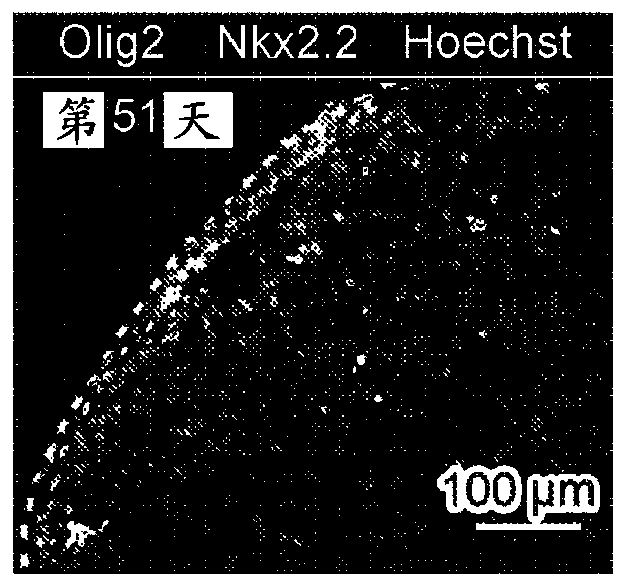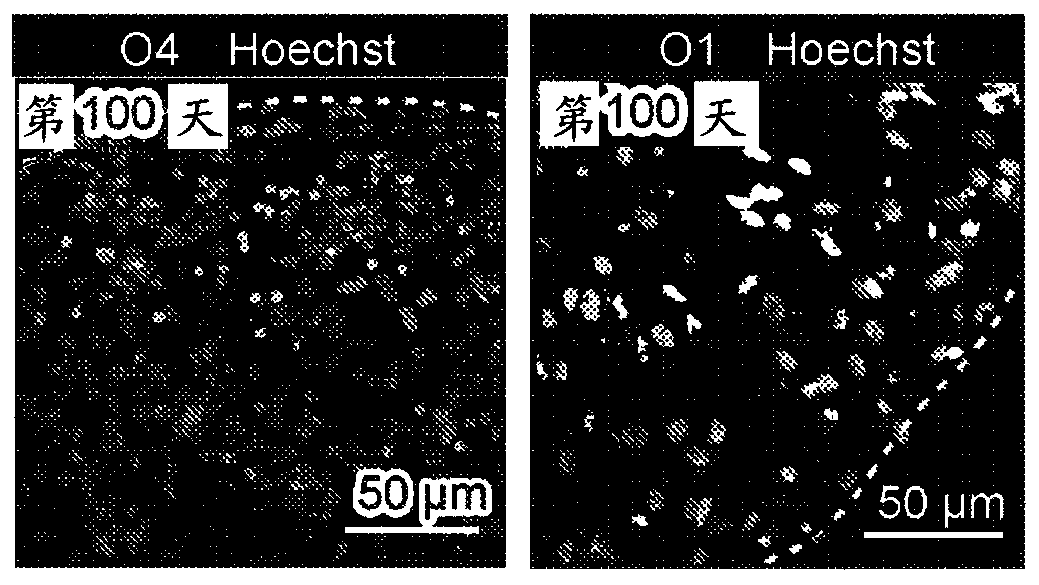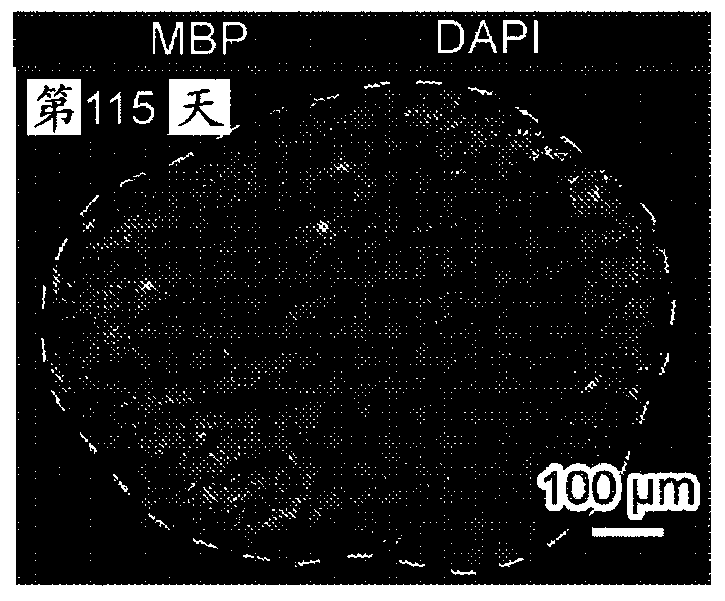Personalized 3D neural culture system for generating human oligodendrocytes and studying myelination in vitro
A technology of oligodendrocytes and astrocytes, applied in 3D culture, nervous system diseases, cell culture active agents, etc., can solve problems such as lack of neurons or impaired glial function
- Summary
- Abstract
- Description
- Claims
- Application Information
AI Technical Summary
Problems solved by technology
Method used
Image
Examples
Embodiment 1
[0088] Previous methods to generate human oligodendrocytes and mimic the in vivo myelination process have been performed in two-dimensional (2D) cultures. In these protocols, myelination is studied when encapsulation of oligodendrocytes is performed around synthetic nanopillars. These methods do not allow the study of myelination as it occurs as a three-dimensional process in the human brain. Alternatively, human stem cell-derived oligodendrocytes have been transplanted into rodents, but it is unclear to what extent the mouse environment affects human oligodendrocyte biology and myelination, and these methods Laborious and does not allow for high-throughput screening. The method described below is the first to generate myelinating oligodendrocytes in vitro in three-dimensional (3D) cultures derived solely from human hiPSCs or hESCs, allowing human myelination to be studied in vitro under healthy and diseased conditions.
[0089] hiPSC maintenance and aggregation. In iPSC me...
PUM
 Login to View More
Login to View More Abstract
Description
Claims
Application Information
 Login to View More
Login to View More - R&D
- Intellectual Property
- Life Sciences
- Materials
- Tech Scout
- Unparalleled Data Quality
- Higher Quality Content
- 60% Fewer Hallucinations
Browse by: Latest US Patents, China's latest patents, Technical Efficacy Thesaurus, Application Domain, Technology Topic, Popular Technical Reports.
© 2025 PatSnap. All rights reserved.Legal|Privacy policy|Modern Slavery Act Transparency Statement|Sitemap|About US| Contact US: help@patsnap.com



